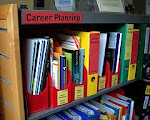Traditionally, most public schools have held six or seven class subject teaching days. Children had to shift gears, throughout the day, and in middle or high schools they have had to move classrooms, for each subject. However, once these kids moved further into College, the training methods were changed to Block learning. So, we went to various sources and began asking the question, which was perceived as being the best method for teaching?
While most of the educators we spoke to agreed, that Block Learning teaching styles are preferred, and most beneficial, the various grades and schools have held to the traditional style to allow for larger classes and reduced budgets which are normally experienced in Elementary through High School grade classes. As the student's progress in their education, they are moved more towards the Block learning style, by having to move from class room to class room, to be with other teachers. However, the work loads are still consistent with what is familiar in Elementary Class schedules, in that there are multiple subjects being taught throughout the day.
In speaking with an educator, who works at Cal-State Fullerton, with at-risk children and community segments, it was communicated that in traditional learning styles, kids have been found to have less abilities to focus on a single subject and even have issues with retention, due to distractions or not enough access to their instructors. She further stated that in discussions with others in her department, and at convention work-shops, that the methods of block learning allowed the student time to absorb materials more readily among at risk groups.
Explaination of Block Learning Concept:
In Block Learning, a few number of class subjects are being taught, in more concentrated amounts, during a single day's schedule. Each class is a little longer than in Elementary or High School. A Typical Elementary, Middle, Or High School Schedule consists of six or seven subject matters, being taught within a 30 or 45 minute segment of time. Once each subject is covered, then the student is moved immediately to the next subject of study.
Block learning allows a larger student population, in the classroom and allows the teacher to cover materials, in a more concentrated curriculum towards one to three class subject days. The student has more access for independent consultation, with educators during classroom time and allows the educator to go further into the explanation of conceptual ideas.
Let's consider that if in a traditional lower educational grade class takes up to 10 minutes for getting materials ready, then taking 10 minutes to store the materials, for the next day, the class may lose up to 20 minutes in a 45 minute class. However, taking the first 10 minute increment, and having an hour or two class time on one subject, gives more direct instruction and problem solving time. Since preparation of each subject being addressed during a typical day is reduced, the students also experience reduced distractions, which increase both productivity and retention on behalf of the student.
Traditional Learning Styles Have Functional Problems:
The problem with this learning style is that if a child gets lost, in a subject, then it takes him/her the ability to move to the next subject. This causes a snow-ball effect, in that the child has a problem in shifting into the upcoming subject. Their concentration becomes clouded with questions, from the previous subject, causing their retention of the newly presented materials as well as the materials covered in the previous class subject.
Another issue with Traditional Learning styles, is that most class room time, being limited to only 45 minutes or less, actually is allows less time of direct educational materials being covered. Let us consider that in each lesson segment, which lasts only 45 minutes, it typically takes the students up to 10 or 15 minutes to get settled.
By the time the student stores the materials from previous lesson, then prepares for the next subject to include any discussions going on with other students, the actual instructional time is significantly reduced. Couple this with larger student populace, in the classrooms, and the reduced number of teachers there is not enough time to expect children to fully learn with any sustainable retention.
Which is better, For Home Schooling Environment?
As per this question, we tend to stick with what we know. However, in using the traditional model of educating children, problems arise quickly for the Home Schooling Parent. Due to the overwhelming nature of this type of program, a Home Schooling Parent will quickly come to appreciate the tasks of the professional teachers. Aside from the parents being required to dedicate more time, ensuring that the children/student is benefiting from the program is more difficult.
Home Schooling can be over-whelming if traditional styles of learning is maintained. Taking a load of materials and expecting the child to cover it all, in one day will not be a greeted positively. The parent can easily be over-whelmed and start to believe that there is no way they can adequately. Again, it must be mentioned that as humans, we tend to go with what is familiar to us.
However, by utilizing a Block learning program, one can allow themselves to become more familiar with, and digest materials. This will have a higher chance of easing the stress both meeting the needs of the children, and allowing the parent to have other projects going on. Questions, which typically will require answering, can more readily be prepared for, by the parent by prereading the materials ahead of time, to become prepared for assignments the following day.
Choosing which Teaching Method is best; that is open for debate and discussion between those directly involved in your child's education. However, according to discussion group participation, which we participated in, and our families direct experiences via home schooling, we feel that the benefits of Block over Traditional teaching methods fits our life.
More links in which you are interested,
india education
mba colleges india
Saturday, November 21, 2009
Saturday, November 14, 2009
Sixth Grade Spelling Games
All primary school students should be able to spell words correctly, and their teachers have the responsibility of ensuring that they do. However, learning how to spell correctly is usually an unexciting, often boring and tedious job. Fortunately, there are a few activities that you, as a teacher, can use to help your students get excited about spelling. The following article will describe a few of these sixth grade spelling activities, but they can be easily amended to fit any of your needs.
Sixth Grade Spelling Game #1
For this spelling game, you will need to divide your class into groups. Generally, groups of 5-6 students work best, though if you can manage with only 3-4 groups (for a total of 4 groups), you may also do that.
Next, your students will choose a "representative" for each of their groups. So, if you are working with four groups, you should have four representatives. Each representative is responsible for talking to you. Now, ask the first question. The representative who raises his/her hand first will answer. If you ask a question such as, "What is the biggest state in the United States?" the representative who must answer will have to spell out the answer.
Award points as necessary. Then, ask your next question. If the representative does not get the answer right, or the spelling right, other representatives may answer. However, all of the students within each group must deliberate for their final answer. The representative cannot do all of the work.
How to make career plans
Sixth Grade Spelling Game #2
For this spelling game, you will again need to divide your students into groups. Having four to five students is best for this game. Then, you will need to create categories. The categories could be anything, but they should be able to include larger words. Some categories may be: state names, country names, foods, animals, etc.
Then, ask about one category at a time. Each group will have to try to come up with a list that includes all of the objects that fall under that particular category. So, if you ask about state names, they may have up to fifty objects.
Once everyone is finished writing down all of the objects that they can think of (give the groups at least 10 minutes or so to finish), each group will choose a representative to write down their list on the board which also famous for sixth grade vocabulary games . You will need to create five columns if you have five groups, and so forth. Then, when all of the groups have finished writing their lists on the board, you will compare the lists. Remember, spelling is the biggest factor. Even if a group has made a longer list, they may not get full points if they do not spell everything correctly.
Sixth Grade Spelling Game #1
For this spelling game, you will need to divide your class into groups. Generally, groups of 5-6 students work best, though if you can manage with only 3-4 groups (for a total of 4 groups), you may also do that.
Next, your students will choose a "representative" for each of their groups. So, if you are working with four groups, you should have four representatives. Each representative is responsible for talking to you. Now, ask the first question. The representative who raises his/her hand first will answer. If you ask a question such as, "What is the biggest state in the United States?" the representative who must answer will have to spell out the answer.
Award points as necessary. Then, ask your next question. If the representative does not get the answer right, or the spelling right, other representatives may answer. However, all of the students within each group must deliberate for their final answer. The representative cannot do all of the work.
How to make career plans
Sixth Grade Spelling Game #2
For this spelling game, you will again need to divide your students into groups. Having four to five students is best for this game. Then, you will need to create categories. The categories could be anything, but they should be able to include larger words. Some categories may be: state names, country names, foods, animals, etc.
Then, ask about one category at a time. Each group will have to try to come up with a list that includes all of the objects that fall under that particular category. So, if you ask about state names, they may have up to fifty objects.
Once everyone is finished writing down all of the objects that they can think of (give the groups at least 10 minutes or so to finish), each group will choose a representative to write down their list on the board which also famous for sixth grade vocabulary games . You will need to create five columns if you have five groups, and so forth. Then, when all of the groups have finished writing their lists on the board, you will compare the lists. Remember, spelling is the biggest factor. Even if a group has made a longer list, they may not get full points if they do not spell everything correctly.
Subscribe to:
Posts (Atom)











